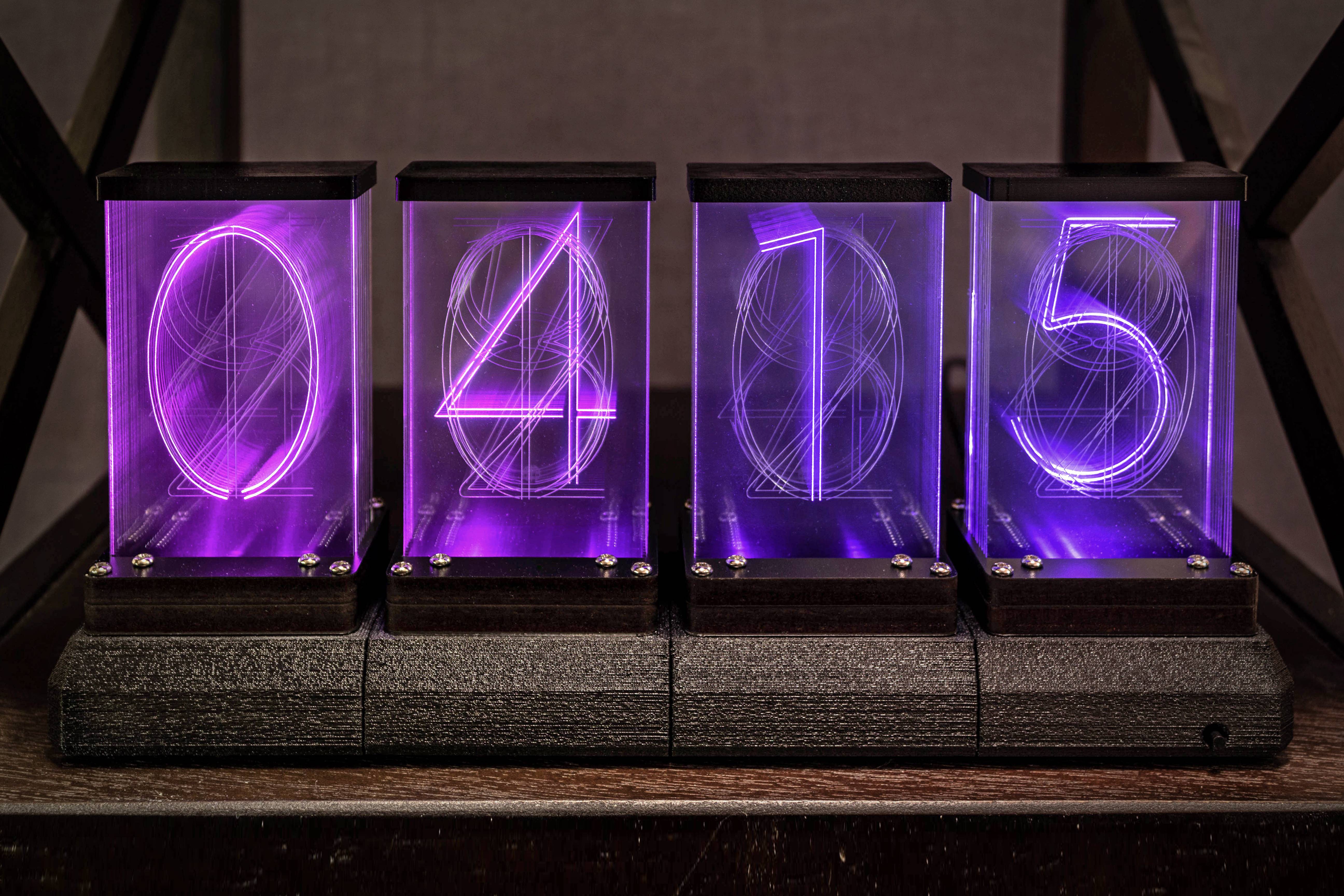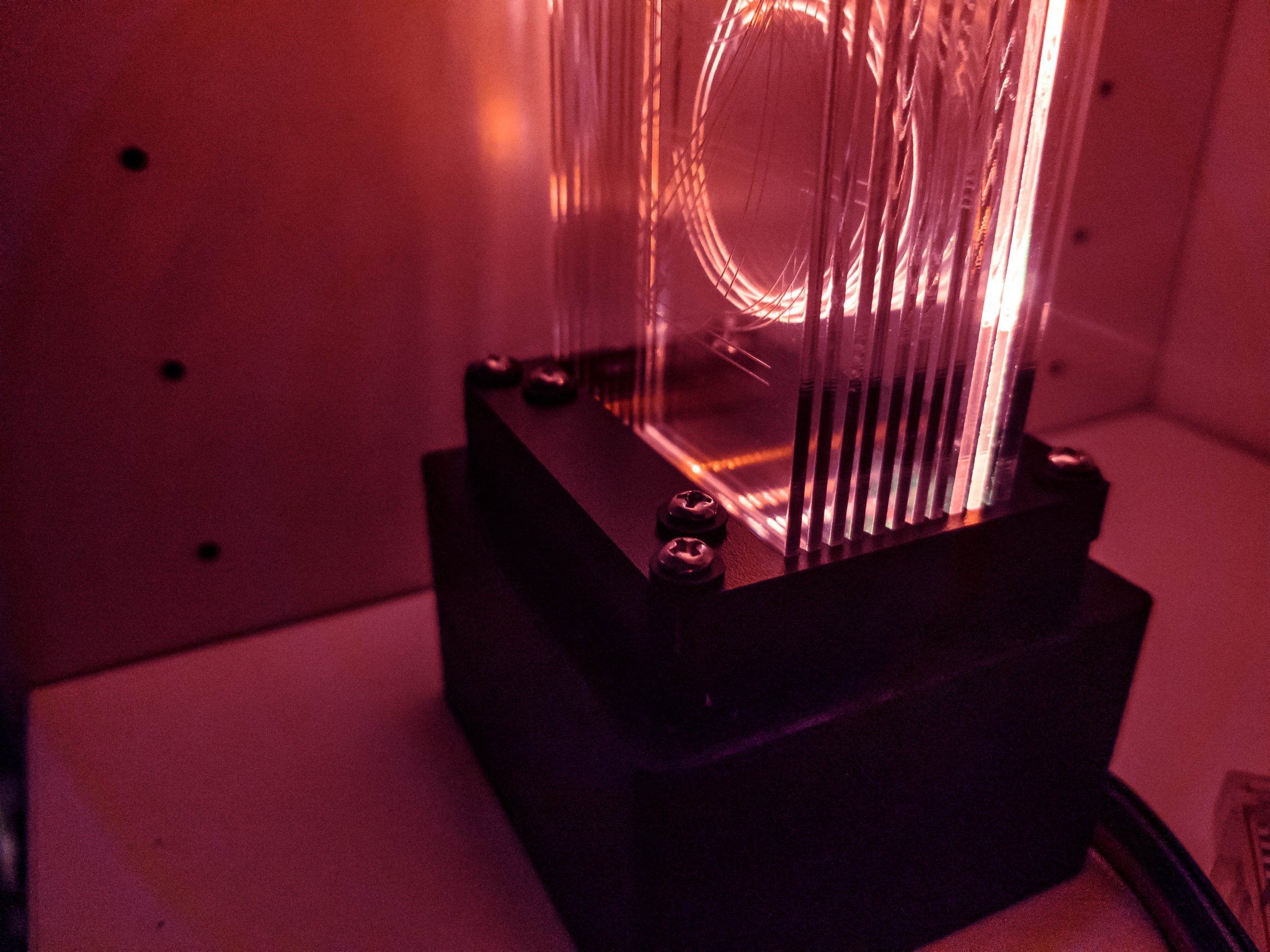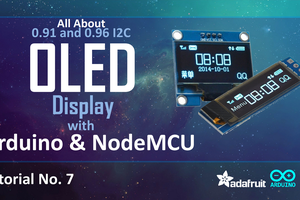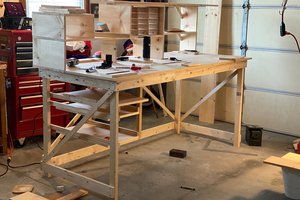LIXIE II - The #NewNixie for Arduino!
----> LAUNCH TRAILER <-----
CLICK HERE TO SEE LIXIES IN ACTION!
AVAILABLE FOR PURCHASE!

WHAT'S NEW?
Modular Panes
Our new Lixie allows the user to remove the panes for cleaning, or to add custom engraved panes in their place.
11th Pane
Lixie II is the only LED Nixie on the market currently offering an 11th pane in the stack. Included with the kit is a decimal point pane which can be replaced with a custom engraving or any one of Ponoko's 3mm acrylics. (A great use for this is their "Dark Grey Tint" acrylic which would allow for a Lixie display right up against a sunny window!)
Better Mounting
There are now 8 screws in the base - 4 for the PCB, and 4 just for fixing the Lixies onto a base! No more careful disassembly before mounting!
Even More Glow
As a result of the modular panes design, Lixie has gone topless! Now they cast even more colorful light into their surroundings.
Easy Kitted Assembly
To reduce the chance of damage during shipping to near-zero, we are not currently offering the Lixie II pre-assembled, as the original (fully-assembled) model would sometimes get broken by a careless postal worker. Don't worry though! The kit is very easy to assemble, and comes with thorough, graphic instructions for assembling the parts from color-coded bags. All of the hard stuff like the soldering is done for you, leaving just the act of removing the protective paper from the digits and screwing the housing together with a standard screwdriver. This is a solder-less kit, that requires no special tools!

How does it work?
Lixie II works by shining light through the edge of a clear acrylic pane. When the light hits an engraving or edge, it scatters in a different direction and lands in your eye! This allows the flat surfaces of the acrylic to stay clear, and have only edges light up! Now put ten pieces in a stack, each marked with a different number 0-9, and you can show each number individually, on a clear surface!
What can it do?
Lixie is based on WS2812B LEDs, (or "Neopixels" Adafruit calls them) meaning it can display the following in any color:
- Date / Time
- Temperature / Humidity
- Website Views
- YouTube Views
- Tindie Sales
- Or any number in any Arduino Project!
What about the original model?
Need to finish an existing set? Don't worry! We'll still be selling the Lixie 1 again soon, and for the next few months. When we do, it will go up for sale at the same time as the Lixie II as a dropdown product option on this page, so you can still use the waiting list system Tindie has. However, our focus going forward will be on the II, and we will eventually be retiring the original model and only stocking parts at our discretion for repairs.
How do I use it?
PLEASE READ:
The Lixie II library was designed for ESP8266/Xtensa microcontrollers, but is backwards-compatible with traditional Arduinos. The new library uses non-blocking animation code, which is great if you're on a 160MHz system like the ESP8266, but (very slightly) affects performance on older 16MHz microcontrollers like the Arduino Uno.
Unlike the Nixie Tubes the Lixie II is based on, setup and use is EXTREMELY easy. Just connect the 5V & GND pins to your Arduino's, and connect the "DIN" pin to any of your digital pins. From there, it's just a matter of including the Lixie II library and simple functions!
For example:
#include "Lixie_II.h" // Include Lixie II Library
#define DATA_PIN 13
#define NUM_LIXIES 4
Lixie_II lix(DATA_PIN, NUM_LIXIES); // Set class name to "lix" and define your Lixie II setup
uint16_t count = 0; // Use this number to count up
void setup() {
lix.begin(); // Initialize LEDs
}
void loop() {
lix.write(count); // Write the count to the displays
count++; // Increment count
delay(1000);
}
Lixie II is designed as a WS2812B strip, meaning you can chain as many of these together as your power supply can handle! There are 22 LEDS on each board, but when used normally only...
Read more » Lixie Labs
Lixie Labs

 Hulk
Hulk
 Grant Giesbrecht
Grant Giesbrecht

 Alex
Alex
Hey Connor -- I'm having a go at building this from scratch, and am trying to figure out what value capacitor to use. It's electrolytic, right? The Eagle .brd file doesn't seem to have a value for it, and I didn't see it mentioned here or on github. The neopixel datasheet https://cdn-shop.adafruit.com/datasheets/WS2812B.pdf suggest 0.1μF per unit so should 2.2μF do? Thanks! Paul